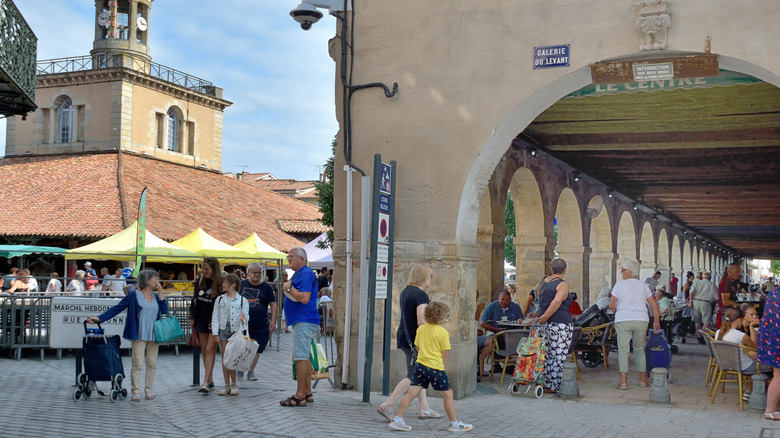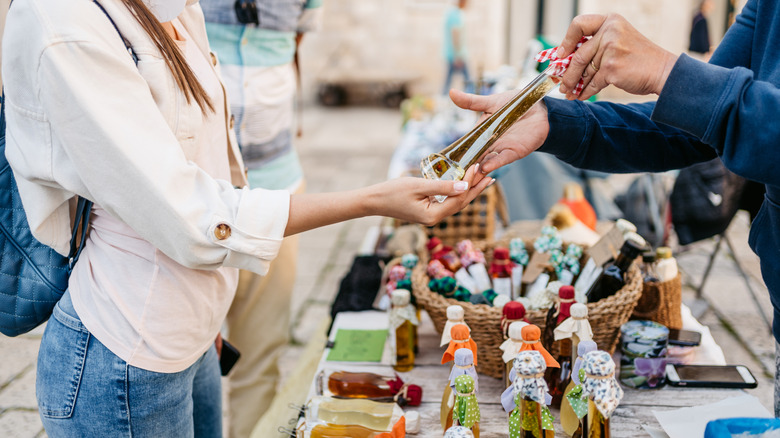France's Medieval Market Town Offers Impressive Architecture And Unspoiled Countryside
Deep in an unspoiled corner of the Midi-Pyrénées region in the south of France, between Toulouse and Carcassonne, lies a proud custodian of ancestral know-how and heritage. The community of Revel was conceived as a bastide, a denomination given to villages or towns in medieval France built specifically for defense purposes. The fortified town was founded in 1342 during the reign of King Philippe VI — early into the turbulent Hundred Years' War. Revel later became an important center of marquetry, where skilled craftsmen produced delicate works of wood inlay. The decorative art, which reached its peak in the 17th and 18th centuries, involves carving into wood and creating a design with contrasting segments of wood, bone, ivory, horn, or precious stones.
Revel is a hidden gem, not typically on the radar as one of the medieval towns not so skip when visiting Europe. But it offers a surprising combination of natural and architectural beauty, historical interest, and mouthwatering gastronomic delights in one of the most beautiful historic markets in France.
Admire Revel's impressive architecture and wood-working heritage
The beautiful central square, Place Philippe VI, is dominated by the 14th-century market hall. It measures around 130 feet on each side, supported by 79 oak pillars crowned by a majestic belfry, registered as a national monument, which rings the bell for the whole town. Note that climbing the tower is not possible until at least spring 2026 when restoration work is complete. The extensive works, however, will make the market even more splendid, framed by the surrounding half-timbered houses and arcades.
Visitors can experience Revel's proud woodworking tradition with visits to local workshops where artisans display their finely honed skills through a combination of modern and historic methods and tools. To delve deeper into this rich heritage, the Wood and Marquetry Museum features the different trades, techniques, and tools of fine woodcrafting over 16,000 square feet of exhibition space, including examples of furniture made in Revel, and a library of over 200 tree species. Revel's church Notre-Dame des Grâces was erected in 1350, eight years after the founding of the bastide. Sadly, the original fell victim to the many vicissitudes of history, until it was finally rebuilt in its present incarnation in the 19th century.
Revel's weekly market and the unspoiled surrounding countryside
Foodies and fans of historic French markets may want to time their visit with the weekly market. Every Saturday morning under the 14th century market-hall, the stalls are heaving with fresh produce in a feast for the senses. Regional specialities abound, including pastries, and charcuterie, while in winter nothing beats the soul-restoring comfort of a hearty cassoulet. The market comes alive as if by magic, the ancient hall resounding in a cacophony of the 300 producers displaying their wares. If you close your eyes, Revel”s spell can transport you to the aromas and sounds as if you were travelling back in time 600 years.
Just outside town, amid the stunning surrounding countryside, is the Saint-Ferréol reservoir, originally constructed in the 17th century to supply water to the Canal du Midi. Today it is a placid spot for a picnic and a refreshing swim. At the base of the dam, Le Reservoir visitor center invites travelers to unlock the workings of the Canal du Midi, a UNESCO World Heritage-listed marvel of engineering with its 223 miles of navigable waterways linking the Mediterranean to the Atlantic and its 328 locks, aqueducts, bridges, and tunnels. Built between 1667 and 1694, commissioned by Louis XV, this is one of the most extraordinary civil engineering achievements of the modern era, and a harbinger of the Industrial Revolution.
The visit doesn't have to stop here. There are many charming nearby villages such as Sorèze, Durfort or La Pomarède, and from here you can venture into the mythical Cathar country, not far from Carcassone, in the quest for the must-visit castles in France.


